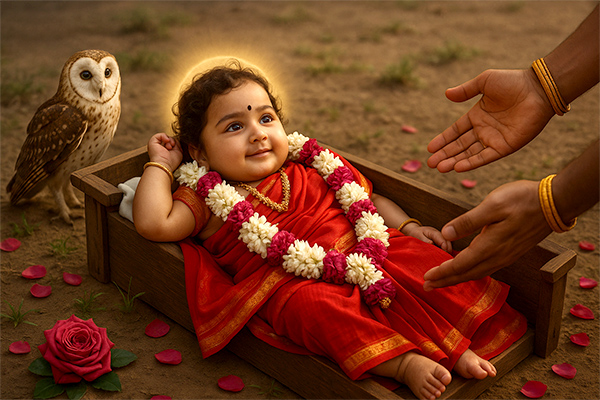
Janaki Jayanti, a sacred celebration marking the birth of Goddess Sita, is set to be observed on Monday, February 9, 2026 . This special day pays tribute to the beloved partner of Bhagwan Rama, symbolizing purity, devotion, and strength. People from all corners of the world unite to honor her sacred presence with prayers, fasting, and heartfelt acts of devotion. Janaki Jayanti offers a moment to contemplate the enduring qualities of Sita, embodying the essence of dharma and steadfast devotion to the Bhagwan. Numerous devotees partake in a day of fasting or participate in special pujas, offering their prayers to seek the blessings of Goddess Sita for spiritual growth and harmony. This moment encourages everyone to strengthen their bond with the Divine and to wholeheartedly embrace the timeless lessons of love, righteousness, and devotion.
Festival Date, Time, Muhurat & Tithi
Janaki Jayanti will be observed on Monday, February 9, 2026
Ashtami Tithi Begins - 05:01 AM on Feb 09, 2026
Ashtami Tithi Ends - 07:27 AM on Feb 10, 2026
-
-
Note: Devotees begin their Janaki Jayanti rituals at sunrise, making it a key time for the day's observances. Sunrise and sunset vary by region and date due to India's geographical diversity. For exact timings, refer to local astronomical data.
Significance & Importance of Janaki Jayanti

Janaki Jayanti, the celebration of the birth of Goddess Sita, holds profound spiritual significance in Hindu tradition. Sita, the consort of Bhagwan Rama and the daughter of King Janaka, is revered as the embodiment of purity, virtue, devotion, and righteousness. Her life and qualities serve as a guiding light for devotees, illustrating how one can live a life of dharma, the highest moral and ethical code. By observing Janaki Jayanti, devotees reflect on the timeless lessons her life imparts, especially the importance of upholding righteousness, truth, and selfless devotion to the Divine.
Sita's life exemplifies unwavering devotion and loyalty. Her love for Bhagwan Rama is a beacon of ideal devotion, demonstrating steadfast faith and commitment in the face of adversity. During the trials she endured, such as her abduction by Ravana and the separation from her beloved husband, she never faltered in her loyalty to him, nor did she stray from the path of virtue. Her strength to maintain moral integrity amidst immense challenges reminds devotees of the power of faith and trust in the Divine, encouraging them to cultivate similar devotion and loyalty in their own spiritual practices.
Beyond her devotion, Sita is also a symbol of inner strength and patience. Her ability to endure hardship with grace and resilience speaks to the deep spiritual qualities required to navigate life’s challenges. Even in captivity, she never lost her composure or her faith, showing that true strength lies not only in external actions but also in maintaining inner peace and clarity. Sita's life encourages devotees to embrace patience, perseverance, and faith in times of difficulty, understanding that these qualities are essential on the spiritual path.
The celebration of Janaki Jayanti also highlights the divine feminine energy, which is a central aspect of Hindu philosophy. Sita, as a goddess, embodies grace, compassion, wisdom, and the nurturing qualities of the feminine principle. Her life illustrates that the divine power is not only within the masculine but also deeply present in the feminine, bringing balance and harmony to creation. By honoring Sita, devotees acknowledge the sacred feminine and seek to bring harmony within themselves by integrating these divine qualities.
Furthermore, Janaki Jayanti serves as an opportunity for spiritual renewal and awakening. Devotees pray to Goddess Sita, seeking her blessings for spiritual growth, peace, and ultimately liberation (moksha). Her life is a reflection of the path to divine union and liberation, where devotion, integrity, and righteousness lead to spiritual freedom. By meditating on her virtues, devotees are inspired to deepen their own faith and commitment to the Divine, striving to live a life that is harmonious and aligned with divine principles.
Thus, Janaki Jayanti is a sacred occasion that allows devotees to reconnect with the divine qualities embodied by Goddess Sita. It is a time for reflection, self-improvement, and spiritual growth, as her life serves as an eternal guide for living a life rooted in devotion, righteousness, strength, and purity. Through this celebration, devotees renew their spiritual vows, seeking the blessings of Goddess Sita to lead them toward peace, enlightenment, and liberation.
Story Behind Janaki Jayanti
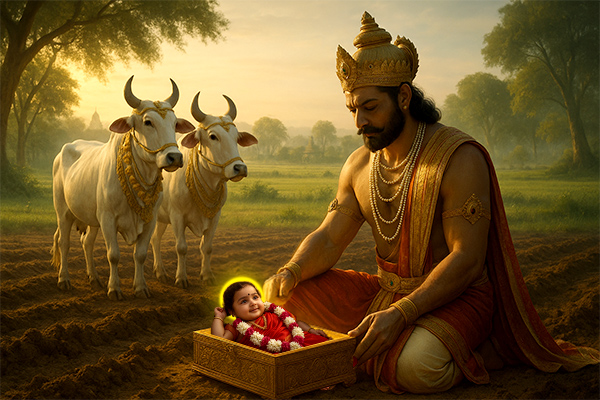
According to the Ramayana, Sita birth place was located in the kingdom of Mithila to King Janaka and Queen Sunaina. The story goes that King Janaka was plowing a field as part of a ritual when he discovered a baby girl in a furrow of the earth. Believing her to be a divine gift, King Janaka adopted her and named her Sita, which means 'one who is furrow-born.' She was raised as a princess and displayed extraordinary qualities of grace, wisdom, and virtue from a young age.
Sita’s life is intricately connected to the life of Bhagwan Rama, whom she marries after he successfully breaks the mighty bow of Bhagwan Shiva in a competition set by her father, King Janaka. The marriage of Rama and Sita is considered an ideal one, rooted in love, respect, and mutual devotion. As the epic unfolds, Sita is abducted by the demon king Ravana, leading to a heroic rescue by Bhagwan Rama. Throughout the trials she faces, Sita remains an epitome of unwavering devotion, purity, and strength, symbolizing the virtues of an ideal wife, daughter, and woman in Hindu tradition.
Janaki Jayanti, therefore, marks the birth of this extraordinary woman, and it is celebrated with great reverence and devotion, especially in regions like Mithila (modern-day Bihar) and parts of Uttar Pradesh, where the story of Sita is particularly cherished. The festival is observed on the 9th day of the bright fortnight of the month of Magha, which typically falls in January or February. It is a time for devotees to reflect on the life and virtues of Sita, and to seek her blessings for purity, strength, devotion, and spiritual growth.
The celebration of Janaki Jayanti also has historical significance, as it serves to reaffirm the values of dharma (righteousness), devotion, and inner strength that are embodied by Sita. It is a time for people to gather in temples, participate in special prayers and rituals, and read or listen to verses from the Ramayana that recount Sita’s life and her divine qualities. The day is also marked by fasting and acts of charity, as devotees honor Sita’s purity and grace and strive to emulate her virtues in their own lives.
In essence, Janaki Jayanti not only commemorates the birth of Goddess Sita but also serves as an occasion to remind devotees of the eternal lessons her life offers—lessons in devotion, righteousness, strength, and unwavering faith in the Divine.
What to do on Janaki Jayanti Festival?
Rejoicing Janaki Jayanti, the birth of Goddess Sita, involves honoring her divine virtues of purity, devotion, and strength. It is a day for spiritual reflection, prayers, fasting, and rituals, primarily observed by devotees of Bhagwan Rama. Here are some ways to celebrate Janaki Jayanti:
- Recite or Listen to the Ramayana:
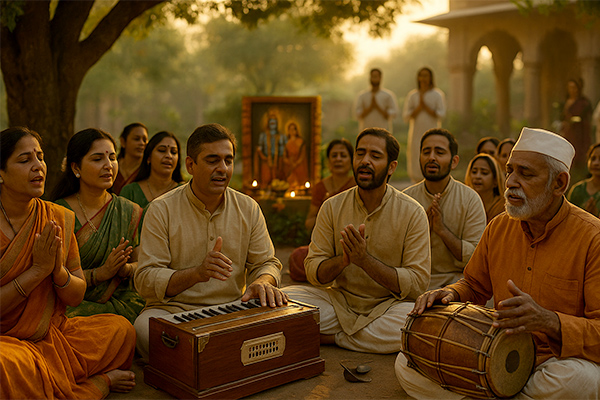
Devotees often read or listen to verses from the
Ramayana
, the sacred epic that narrates the story of Bhagwan Rama and Goddess Sita. Special emphasis is given to recounting Sita’s virtues, her unwavering devotion to Bhagwan Rama, and the challenges she faced with grace and strength.
- Sita Puja (Worship of Goddess Sita):
_201922.jpg)
On Janaki Jayanti, many devotees perform
puja
(ritual worship) to honor Goddess Sita. The puja may include offering flowers, fruits, and sweets to her image or idol. Chanting sacred mantras like the
'Sita Ashtakshara Mantra' (Om Sita Ramaya Namah)
and other prayers dedicated to her is believed to invoke her blessings.
- Fasting (Vrata):
_201937.jpg)
Some devotees observe a fast, which may vary from a full fast to a fruit-based diet, depending on individual preference and regional traditions. Fasting on Janaki Jayanti is believed to purify the body and mind, bringing spiritual benefits and aligning oneself with the divine qualities of Sita.
- Holy Bath and Rituals:
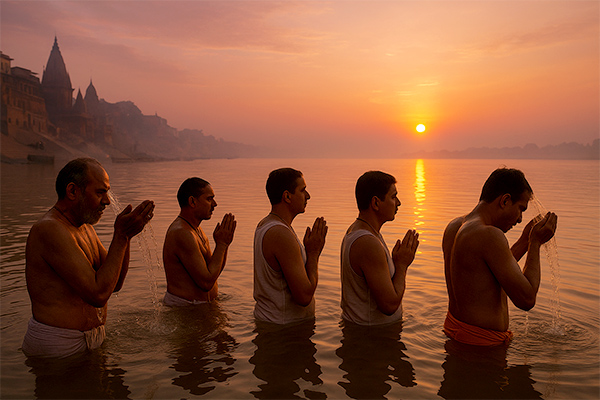
Many devotees take a holy bath early in the morning during the auspicious Brahma Muhurta, the period before sunrise. This is considered a time of spiritual renewal and purity. After the bath, devotees perform
puja
and engage in prayer, chanting, or meditation.
- Offerings and Charity:
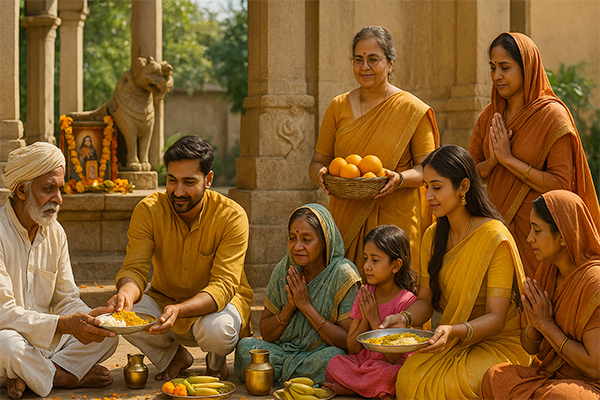
It is customary to offer food and other donations to the poor and needy on this day, as an act of charity (dana) in honor of Goddess Sita’s selflessness and compassion. This act of kindness is seen as a way to earn spiritual merit and seek blessings for prosperity and peace.
- Decorating Temples and Homes:
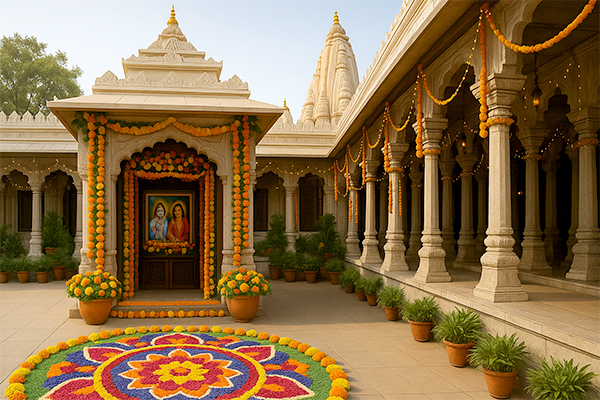
Temples and homes dedicated to Bhagwan Rama and Goddess Sita are often beautifully decorated with flowers, lights, and rangolis. Some temples may also host special events, kirtans (devotional singing), or satsangs (spiritual discourses) on this day to celebrate the divine birth of Sita.
- Sita Jayanti Processions:
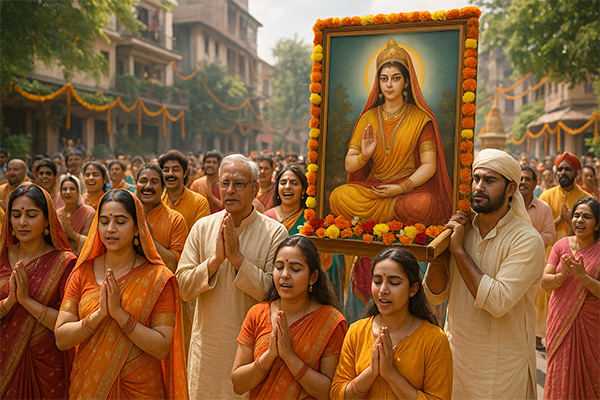
In certain regions, particularly in Mithila (the birthplace of Goddess Sita), processions and community gatherings are organized, where devotees come together to chant hymns, sing devotional songs, and celebrate the birth of Goddess Sita in a joyous and festive atmosphere.
- Meditation and Contemplation:
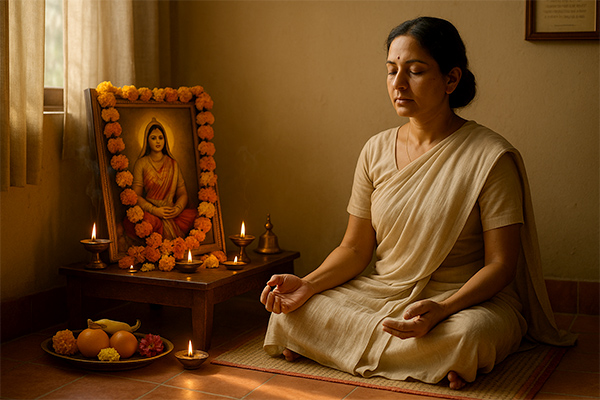
Devotees may spend the day in quiet contemplation or meditation, reflecting on the life and teachings of Goddess Sita. By meditating on her virtues, they aim to imbibe qualities like patience, devotion, humility, and purity in their own lives.
Janaki Jayanti is a way to honor the divine qualities of Goddess Sita and seek her blessings for spiritual growth, peace, and strength. Through devotion, fasting, prayer, and acts of kindness, devotees aim to connect with the divine energy of Sita and live a life of righteousness and virtue.
Janaki Jayanti Festival Puja Vidhi (Puja Procedure)
The
Puja Vidhi
(puja procedure) for Janaki Jayanti varies by region and personal preference, but it generally involves a series of rituals meant to honor Goddess Sita and seek her blessings for spiritual growth, strength, and prosperity. Here's an expanded guide to performing Janaki Jayanti Puja:
Preparation for Puja:
Before starting the puja, it is important to purify the environment and the worshippers. This involves cleaning the home or temple space where the puja will be conducted.
-
Cleanse the space:
Sweep and clean the area, ensuring it is tidy and free from any impurities.
-
Place an altar or sacred platform:
On the altar, place an image or idol of Goddess Sita along with Bhagwan Rama, as both are revered together. You may also place a picture of Sita or any sacred image that represents her.
Gather puja items:
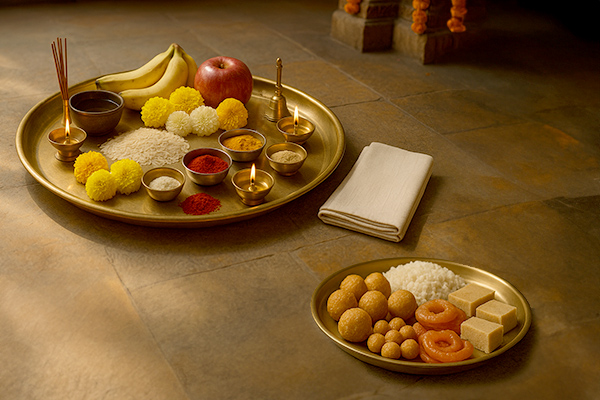
Some essential items needed for the puja include:
-
Fresh flowers (preferably white or yellow)
-
Fruits (bananas, apples, pomegranates)
-
Incense sticks or dhoop
-
Diyas (small oil lamps or candles)
-
Rice, vermilion (kumkum), turmeric, and sandalwood paste
-
A small bell (optional)
-
Holy water or Ganga Jal (if available)
-
A plate for offering food, sweets, and prasadam (blessed food)
-
A clean cloth to cover the altar
Bathing and Dressing for the Occasion:
It is considered auspicious to take a holy bath early in the morning before beginning the puja, especially during the Brahma Muhurta (the period before sunrise). Wear clean, sacred clothing, preferably in white or light colors, as these are associated with purity.
Invoking Bhagwan Ganesha:
Begin the puja by invoking Bhagwan Ganesha, the remover of obstacles, to ensure that the puja is conducted smoothly and without hindrance.
Offer flowers and chant the Ganesh mantra:
' ॐ गं गणपतये नमः ' (Om Gan Ganapataye Namah)
Sankalpa (Vow or Intention):
Make a solemn vow or Sankalpa, stating your intention for performing the puja. This can be a prayer for spiritual growth, health, prosperity, or strength, seeking the blessings of Goddess Sita for a virtuous life.
Recite the following Sankalpa:
“I, (name), am performing the puja on this auspicious day of Janaki Jayanti, to seek the blessings of Goddess Sita for peace, prosperity, and righteousness in my life. May her divine grace purify my heart and guide me on the path of virtue.”
Lighting the Diyas:
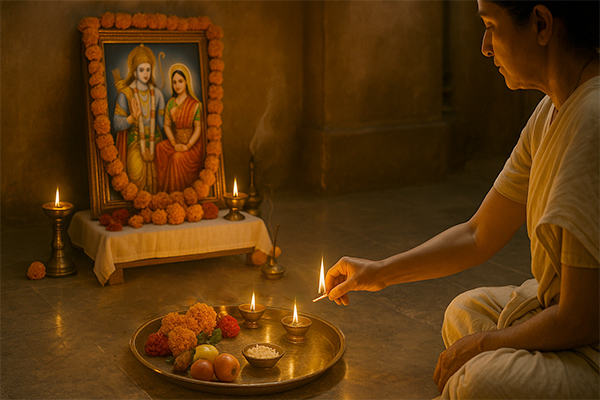
Light the oil lamps (diyas) to symbolize the victory of light over darkness and knowledge over ignorance. As you light the lamps, chant the following mantra:
' ॐ ज्योतिर्नमस्तुते ' (Om Jyotir Namastute)
Offering Flowers and Fruits:
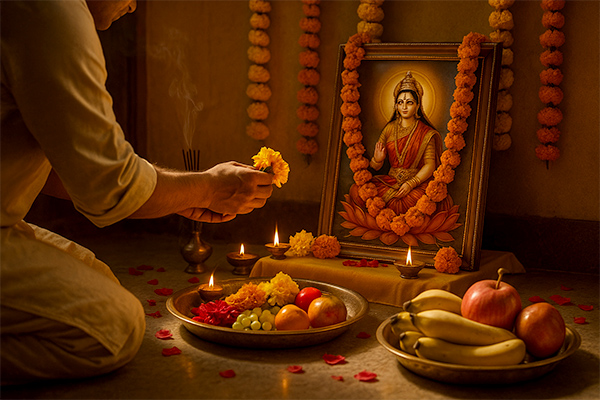
Offer fresh flowers to the deity while chanting the name of Goddess Sita. Offer fruits as well, symbolizing purity and devotion.
You may offer the following prayer while offering flowers:
“O Goddess Sita, I offer these flowers as a symbol of my love, devotion, and respect for your divinity. May your blessings shower upon me.”
Chanting Sita Ashtakshara Mantra:
The Sita Ashtakshara Mantra is a powerful mantra that is often chanted during Janaki Jayanti Puja. The mantra is:
' ॐ श्री सीतायै नमः ' (Om Shree Sitaayai Namah)
Recite this mantra 108 times using a mala (prayer beads) or simply with focused devotion. The number 108 is sacred in Hinduism and is considered to be the ideal number of repetitions for the mantra to bring spiritual benefits.
Reciting Sita Stuti (Praise of Sita):
After chanting the Ashtakshara Mantra, recite hymns or verses praising Goddess Sita. Some commonly recited verses include parts of the
Sita Ashtakshara Stotra
,
Sita Saptashati
, or the
Ramayana
.
One of the popular prayers to chant is:
' जय श्री सीता राम जय जय श्री सीता राम '
(Jai Shri Sita Ram Jai Jai Shri Sita Ram)
This simple and powerful prayer calls upon the names of Bhagwan Rama and Goddess Sita together, acknowledging their eternal bond and divine qualities.
Offering Prasadam (Blessed Food):
_201930.jpg)
Prepare sweets and food offerings to present to Goddess Sita. This can include traditional dishes like rice, fruit, and sweet preparations like
laddus
,
halwa
, or
kheer
. After offering these, say a prayer:
' ॐ श्री सीतायै नमः ' (Om Shri Sitaayai Namah)
Offer the prasadam (blessed food) to the deity and later share it with family or devotees present.
Aarti:

At the end of the puja, perform the aarti (a ritual of waving lighted lamps) while singing or chanting devotional songs dedicated to Goddess Sita and Bhagwan Rama. You can either sing a traditional
aarti
or a simple prayer:
' श्री रामचन्द्र कृपालु भज मन हरण भव भीतरी '
(Shri Ramachandra Kripalu Bhaj Man Haran Bhav Bhitri)
Wave the lighted lamps around the idol or picture of Goddess Sita, and make sure to do it with full devotion and reverence.
Praying for Blessings:
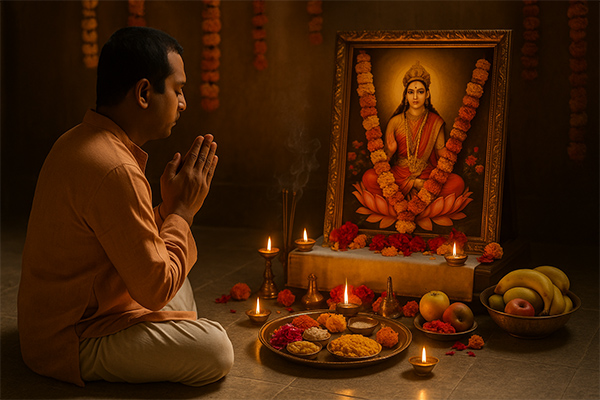
Conclude the puja by offering a final prayer to Goddess Sita. Seek her blessings for peace, prosperity, and the strength to overcome life's challenges with devotion and righteousness.
Example prayer:
“O Goddess Sita, on your auspicious birth anniversary, I pray for your divine blessings. May I always walk the path of righteousness, be blessed with purity of heart, and remain steadfast in my devotion. May you protect me from all adversities and lead me to a life of peace and harmony.”
Concluding the Puja:
After completing the puja, offer gratitude to Goddess Sita for accepting the offerings and blessings. You may then take a moment to meditate or contemplate her divine qualities. It is customary to distribute the
prasadam
(blessed food) to all present.
In conclusion, the Janaki Jayanti Puja is a beautiful and spiritually enriching occasion to honor Goddess Sita, seek her blessings, and deepen your devotion to Bhagwan Rama and his consort. The rituals and prayers performed during this puja serve to align the devotee with the divine virtues of purity, devotion, strength, and righteousness embodied by Goddess Sita.
Janaki Jayanti Puja Mantra
The
Sita Gayatri Mantra
is a variation of the Gayatri mantra dedicated to Goddess Sita. Chanting the Gayatri mantra is said to purify the mind and soul, invoking divine wisdom and protection.
Mantra:
' ॐ श्री सीतायै विद्महे , रामपत्नी महादेवी।
तन्नो सीता प्रचोदयात् '
(Om Shri Sitaayai Vidmahe, Ramapatni Mahadevi,
Tanno Sita Prachodayat)
This mantra is believed to bring spiritual enlightenment, peace, and protection from all challenges, just as Goddess Sita stood as an embodiment of purity and righteousness in the Ramayana .
Janaki Jayanti Vrat Vidhi (Fasting Procedure)
Janaki Jayanti Vrat begins early in the morning and continues through the day, with the ultimate goal of seeking the divine blessings of Goddess Sita.
-
To start, it is customary for devotees to cleanse themselves by taking a holy bath during Brahma Muhurta, the auspicious period before sunrise. This cleansing ritual prepares both the body and the mind for the spiritual practices of the day.
-
After the bath, one should wear clean and simple clothes, preferably white, to maintain purity during the vrat.
-
The next step is to prepare a clean and sacred space for worship, where an altar with an image or idol of Goddess Sita is set up. Flowers, incense sticks, and a diya (oil lamp) are placed on the altar as offerings to the goddess.
-
The Janaki Jayanti Vrat is a time to express devotion and make a solemn vow or Sankalpa. Devotees often take an intention to perform the vrat with full devotion, seeking blessings from Goddess Sita for purity, strength, and spiritual growth. This vow helps one stay focused on the spiritual purpose of the fast and creates a deeper connection with the divine.
-
The fasting procedure can vary, with some devotees observing a
Nirjala Vrat
, abstaining from both food and water for the entire day, while others opt for a
Phalahar Vrat
, consuming only fruits and milk throughout the day. Both forms of fasting are considered to purify the body and mind, allowing the devotee to align more closely with the spiritual energy of Goddess Sita.
-
Throughout the day, the observance of Janaki Jayanti Vrat includes worshiping Goddess Sita with devotion. Devotees offer fresh flowers, fruits, and sweets to the deity while chanting mantras such as the Sita
Ashtakshara Mantra
('Om Shree Sitaayai Namah')
or other prayers dedicated to Goddess Sita. Repeating the mantra 108 times using a mala (prayer beads) is a common practice, as it is believed to invoke the blessings of the goddess and purify the soul.
-
Devotees may also engage in reading or reciting verses from the
Ramayana
, particularly those that describe Sita’s virtues of unwavering devotion and righteousness.
-
The day is spent in deep prayer, meditation, and reflection on the divine qualities of Goddess Sita. It is essential to focus on maintaining mental purity by avoiding any negativity in thoughts, speech, or actions, as the vrat is as much about internal spiritual discipline as it is about physical fasting.
-
The fast is typically broken the following day, during the Parana time, which is usually after sunrise, between 6:30 AM and 9:00 AM. It is important to break the fast with light, sattvic (pure) food, such as fruits, milk, or nuts, in keeping with the spirit of purity and devotion.
-
Before consuming the food, devotees offer gratitude to Goddess Sita for accepting their prayers and blessings. This is an important moment of connection with the divine, acknowledging the grace and blessings received during the vrat.
-
After breaking the fast, it is customary to distribute
prasadam
(blessed food) to family members or fellow devotees, symbolizing the sharing of divine blessings and reinforcing a sense of community and goodwill.
-
The Janaki Jayanti Vrat is also an occasion for charity. Engaging in acts of charity, such as donating food, clothing, or money to the less fortunate, is considered an important aspect of the celebration. Goddess Sita’s life is an example of compassion and selflessness, and through acts of kindness, devotees honor these virtues. By observing this vrat, devotees not only purify their bodies and minds but also cultivate the values of love, devotion, and charity, which are central to the teachings of Goddess Sita.
Janaki Jayanti Vrat is a profound spiritual practice that goes beyond fasting. It is an opportunity to reflect on the virtues of Goddess Sita, to cultivate purity, devotion, and righteousness, and to deepen one’s connection with the divine. Through prayer, fasting, charity, and acts of devotion, devotees seek to align themselves with the noble qualities that Goddess Sita embodied, ultimately leading them toward spiritual growth and inner peace.
Janaki Jayanti Vrat Katha (Traditional Fasting Story)
The Janaki Jayanti Vrat Katha is a traditional story that narrates the significance and spiritual essence of the Janaki Jayanti fast, which is observed to honor the birth of Goddess Sita. The katha (story) focuses on the virtues of Goddess Sita—her purity, devotion, and strength—and illustrates how observing this fast can bring blessings of prosperity, spiritual growth, and divine protection.
The Birth of Goddess Sita
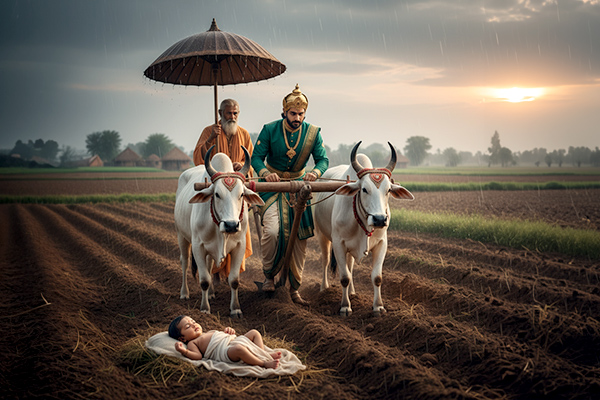
The story begins with the divine birth of Goddess Sita. According to Hindu mythology, Goddess Sita was not born in the conventional way. She is believed to have been discovered in a field by King Janaka, the ruler of Mithila. One day, while plowing the land to perform a yajna (sacred fire ritual), King Janaka’s plow struck something in the soil. When he dug it up, he found a beautiful baby girl. King Janaka, overwhelmed by divine blessings, adopted the child as his own and named her Sita, meaning 'plowed one.'
The birth of Sita was a miraculous event, and she was soon recognized as the divine incarnation of Goddess Lakshmi, the consort of Bhagwan Vishnu. It is said that Sita was not only born with divine beauty and wisdom but also with the qualities of compassion, righteousness, and purity. As she grew up, she became the embodiment of virtue and an ideal daughter, wife, and mother. Her devotion to Bhagwan Rama, her husband, is considered the epitome of loyalty, and her life story is a guiding light for people seeking to live a righteous and devoted life.
The Story of Sita’s Marriage to Bhagwan Rama
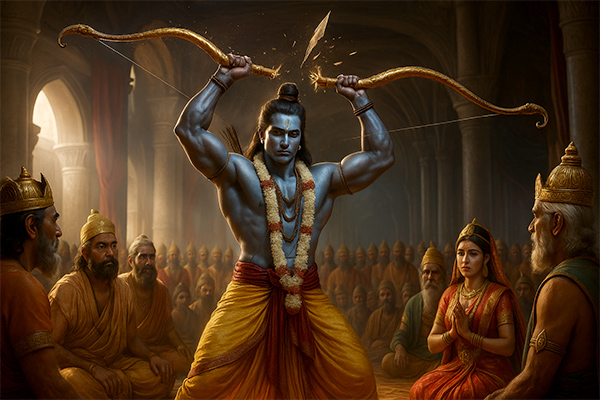
As the story unfolds, the most significant event in Sita’s life was her marriage to Bhagwan Rama, the prince of Ayodhya. King Janaka organized a Swayamvara (a ceremony in which a bride chooses her groom) for Sita. During this event, Sita was to choose her husband from among the many suitors who gathered to win her hand. However, King Janaka set a difficult condition: the suitors would have to lift and string a massive bow, known as the Shiv Dhanush (the bow of Bhagwan Shiva). Many princes and kings tried, but none succeeded.
When Bhagwan Rama, the eldest son of King Dasharatha, participated, he not only lifted the bow with ease but also broke it, fulfilling the challenge. At that moment, Sita chose Bhagwan Rama as her husband, and their marriage was celebrated with great joy. This event is a symbol of the divine union between Bhagwan Rama, an incarnation of Vishnu, and Goddess Sita, an incarnation of Lakshmi.
In the katha, it is told that King Janaka, a righteous and wise ruler, was the first to observe a fast on Janaki Jayanti to honor his daughter, Goddess Sita. He would fast and offer prayers, asking for her blessings for the welfare of his kingdom and people. The fast was soon adopted by his people, and it became a cherished tradition that continues to this day. Those who observe the fast with pure devotion are believed to be protected from all hardships, receive guidance in times of difficulty, and find their desires fulfilled.
The Story of Bhagwan Rama and Sita’s Devotion
Another part of the katha narrates how Sita's devotion to Bhagwan Rama was unwavering, even though times of great adversity. When Sita was abducted by Ravana, the demon king of Lanka, she was separated from Bhagwan Rama. Despite being held captive, she never wavered in her faith and devotion to him. Her strength, patience, and undying love for Rama are celebrated as an example of the highest form of devotion and loyalty.
In the story, it is also mentioned that after Ravana’s defeat and the reunion of Rama and Sita, they return to Ayodhya. Their return is celebrated with great joy by the people of the kingdom, and the event is marked by the festival of Diwali. This part of the story reinforces the importance of the virtues of love, patience, and dedication to duty, which are central to the worship of Goddess Sita.
Round & Sita Rama Engraved Tulsi Beads Bracelet

This Sita Rama Engraved Tulsi Beads Bracelet features delicate engravings alternated with plain beads, depicting Sita and Rama on natural white Tulsi beads.
Buy Sita Rama Engraved Tulsi Beads Bracelet
Sita Rama Engraved Tulsi Beads Bracelet
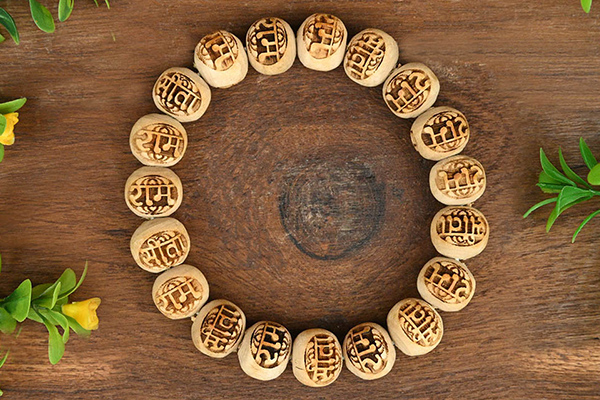
This Sita Rama Engraved Tulsi Beads Bracelet showcases delicate engravings of Sita and Rama on natural white Tulsi beads, strung in durable elastic thread, eliminating the need for clasps or closures.
Buy Sita Rama Engraved Tulsi Beads Bracelet
Sita Rama Engraved Tulsi Beads Mala With Sitarama Pendant
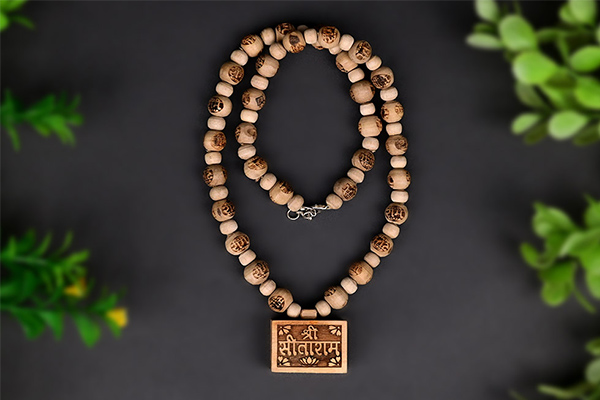
Wearing a Tulsi mala is believed to offer spiritual protection against negative energies, evil forces, and diseases. The plant's inherent properties are believed to create a shield of positive energy around the wearer.
Buy Sita Rama Engraved Tulsi Beads Mala With Sitarama Pendant
Puja Utensils, Essentials
Rudra Centre brings an extensive collection of Puja Articles which caters to all that is required for daily and special Puja Vidhis. We offer variants of designs and sizes in each category. The list includes handcrafted Puja Mandirs, Puja Pedestals, offering Bowls, Panchpatra, intricately carved Puja Thalis, Abhishek Vessels, in different materials, Pure Silver/German Silver articles like Kalash, set of Shodash Upachara and Several other Puja Articles, which we deliver at your doorstep.
Conclusion
Janaki Jayanti is a spiritual celebration that invites us to pause, reflect, and reconnect with the Divine. Through fasting, prayers, and acts of devotion, we honor Goddess Sita, the embodiment of purity, strength, and devotion. This sacred day offers an opportunity to purify our hearts and minds, shedding the weight of negativity while inviting peace and positivity into our lives. Janaki Jayanti serves as a reminder that faith, devotion, and sincere effort can lead to transformation, spiritual growth, and divine blessings, regardless of our past.
Whether chanting mantras, performing acts of charity, or simply reflecting in quiet prayer, let this day inspire you to walk the path of virtue and spiritual fulfillment. May Goddess Sita’s grace guide and uplift you, bringing peace, prosperity, and divine protection into your life.


-in-Astrology.jpg)
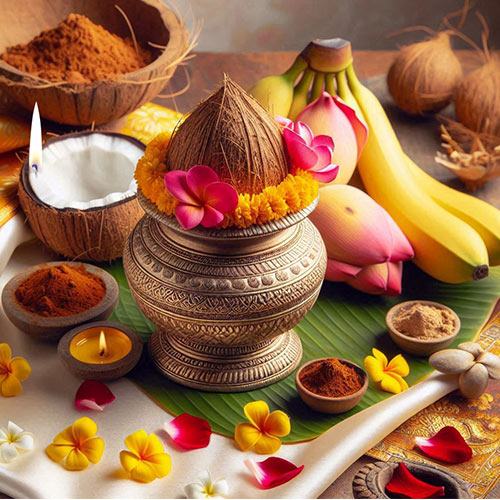

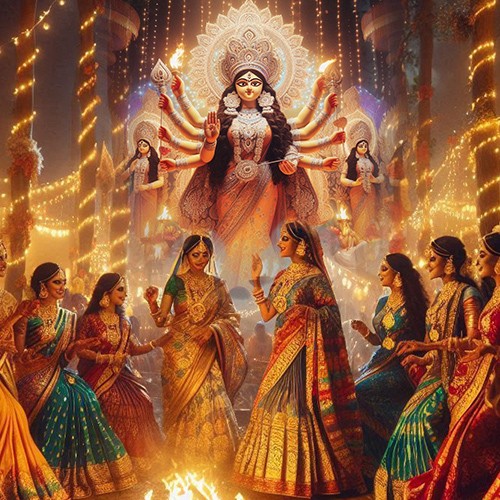
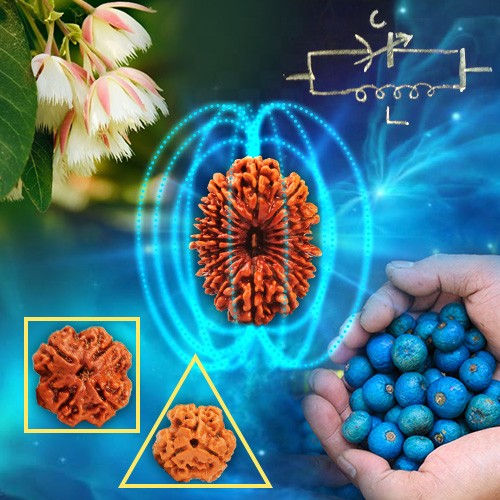

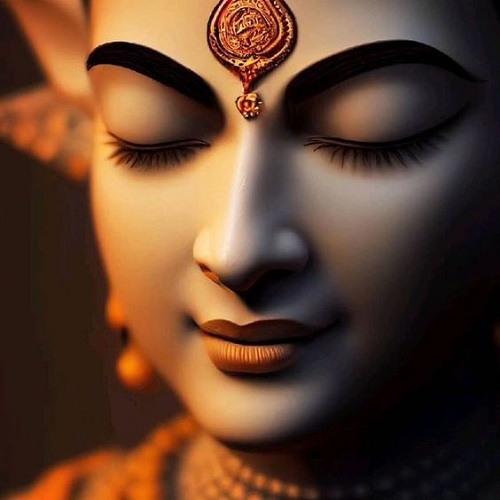
.jpg)
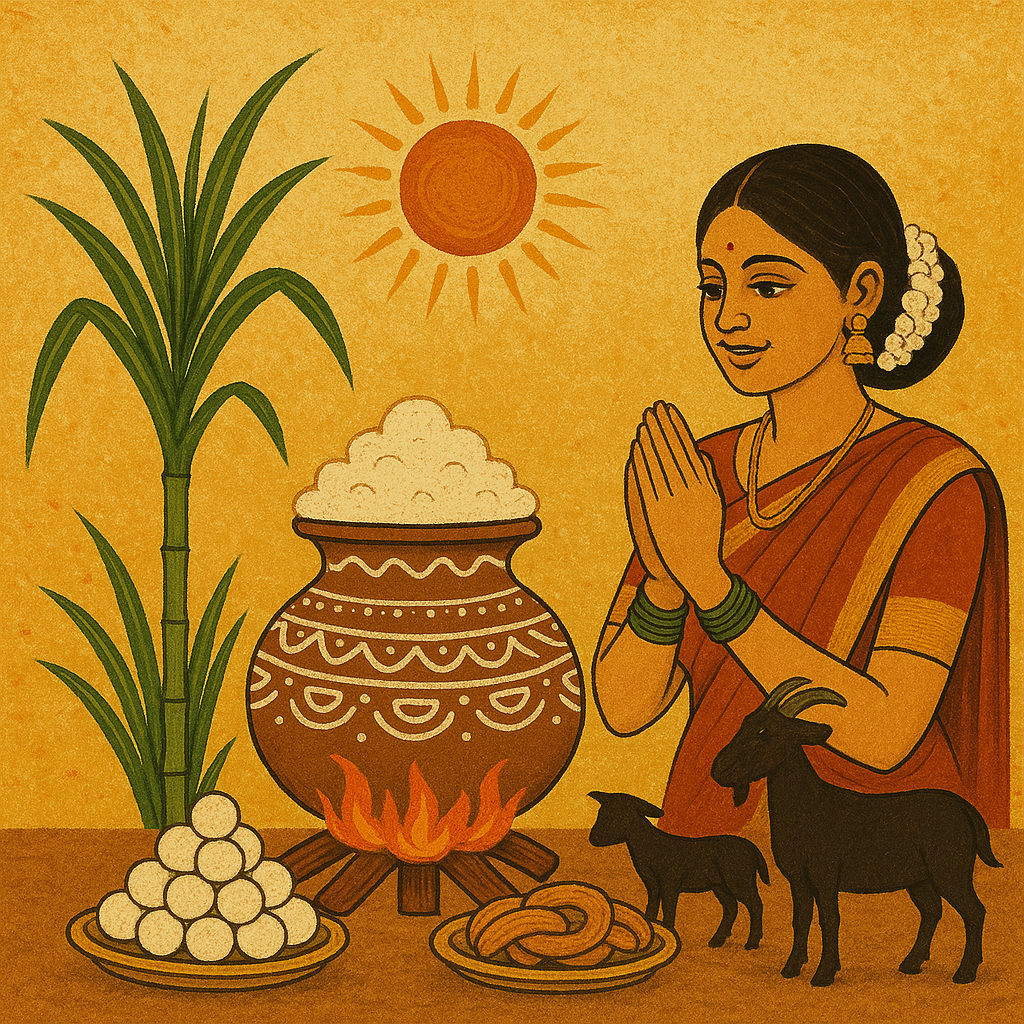
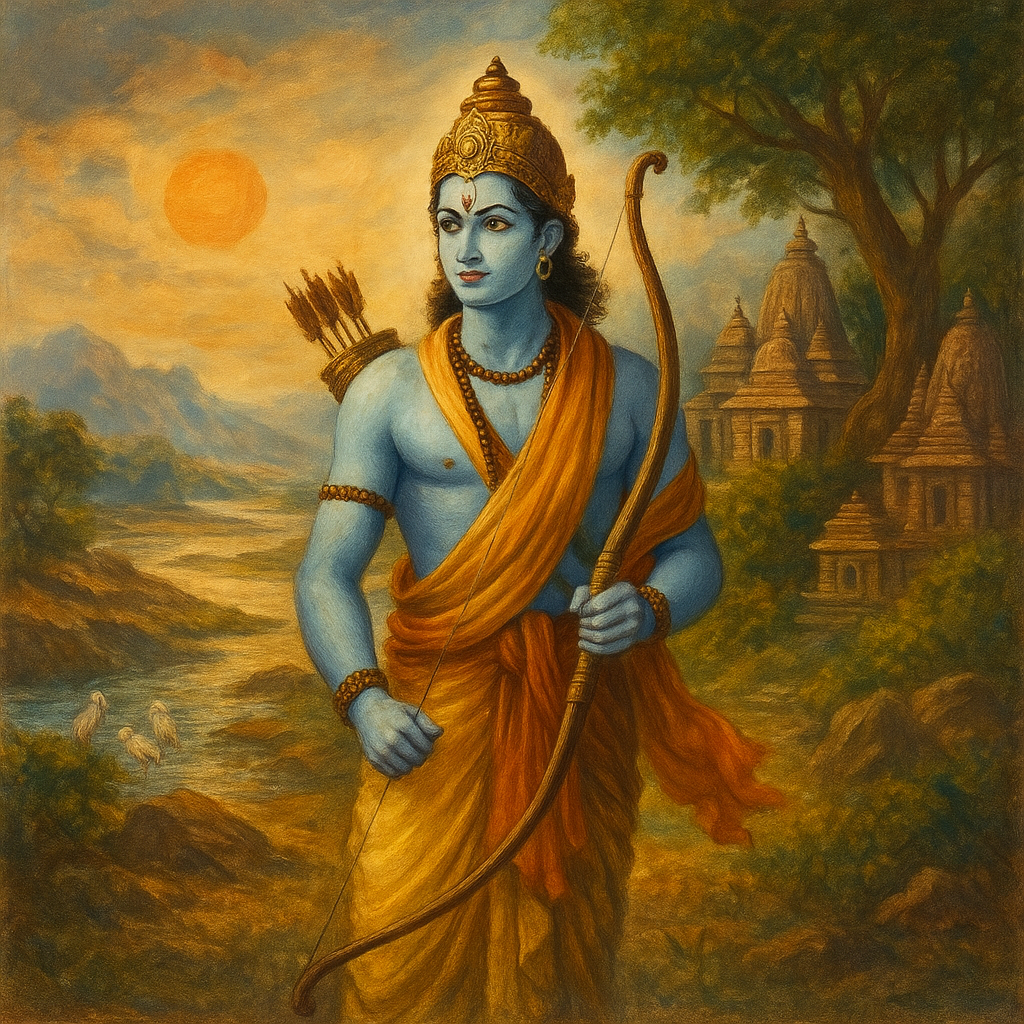
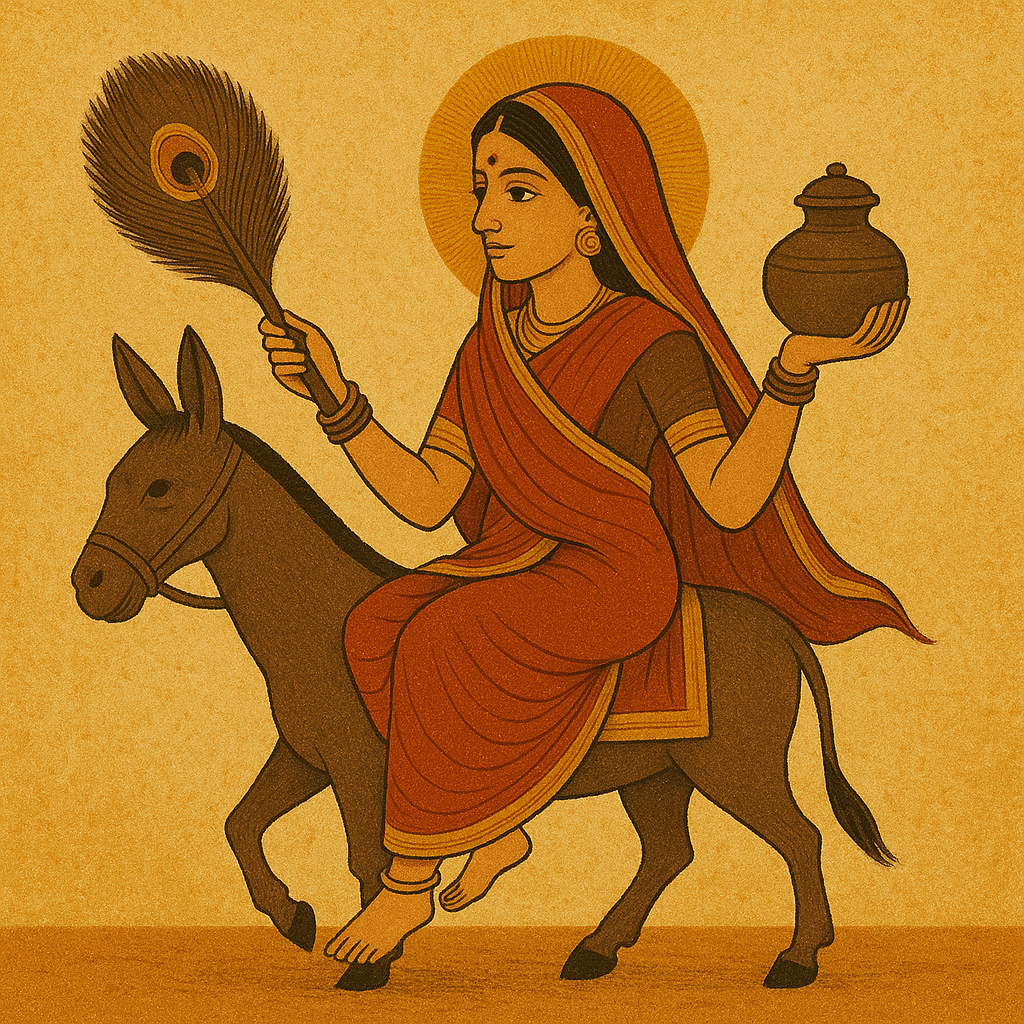
Comments 0
Leave your thought here